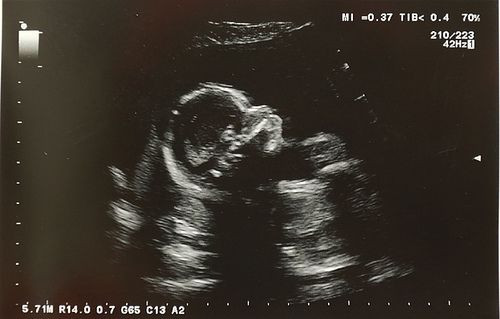Doctors Operate On Heart Of 25-Week-Old Fetus, Use Grape Cast In Jello For Practice

A team of doctors from Los Angeles’ CHA Hollywood Presbyterian Medical Center recently pulled off Southern California’s first fetal aortic valvuloplasty. Their patient was a mere 25 weeks old.
The remarkably precise surgery was a life or death matter for the growing baby, whose heart suffered from severe aortic stenosis — a term meaning it was badly contracted — and the only way to fix it was to inflate it with a delicate tag team involving a balloon only a few millimeters wide, a wire the width of a single hair, and a needle exactly 11 centimeters long, the Los Angeles Times reports.
If doctors didn’t act immediately, the fetus risked losing total function of its heart’s left ventricle, in a life-threatening condition known as hypoplastic left heart syndrome (HLHS).
But navigating the dense landscape of a mother’s stomach, through the uterus, penetrating the amniotic cavity, and then piercing the fetus’ chest — all before operating on a heart the size of a walnut — is somewhat tricky.
To help themselves prepare, the doctors used a grape as the heart’s stand-in. And they placed the model heart inside a model body, which they replicated with Jello. After a few clean run-throughs, they sedated the mother with local anesthesia, gave the fetus anesthesia and a muscle relaxant so it wouldn’t fidget, and they got to work.
The procedure itself is simple, but requires near impossible dexterity. Dr. Ramen Chmait, director of Los Angeles Fetal Therapy, first fed the needle through mother and child and stopped once it reached the problem aorta. Then, pediatric interventional cardiologist Frank Ing of CHLA threaded a wire just 14/1000 of an inch down through the needle. A small balloon tracked along the wire and, by way of a catheter, inflated the aorta with a premeasured amount of liquid, even tearing it somewhat to allow enough blood to rush in.
Out came the balloon, then the wire, and finally the needle — and it was done.
Now roughly three weeks after the Sept. 25 surgery, both mother and baby are recovering as planned. Without the surgery, Dr. Chmait said that insufficient amounts of blood would be reaching the heart, and HLHS wouldn’t even be a question.
The condition affects roughly one out of every 4,344 babies born in the United States each year, according to the Centers for Disease Control and Prevention. That’s about 960 babies each year. Babies that survive HLHS through surgery may still have lifelong complications. A heart transplant may be needed, but fortunately for the Medical Center’s latest case, swift action forestalled that scenario.
"There is no question in my mind that without this procedure the baby would have had HLHS," Chmait told the LA Times. "Now the baby has a chance to have the left ventricle recover with some good function."
Published by Medicaldaily.com



























